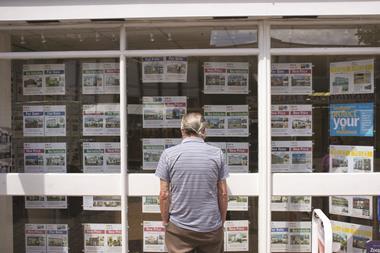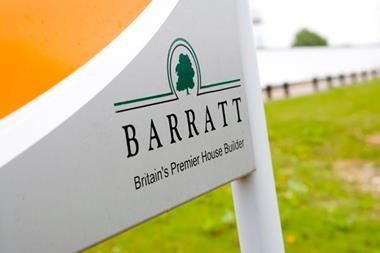Fickle things, shares. Just when the housebuilders were suggesting, in the words of two past prime ministers, that they had never had it so good and things could only get better, their shares took a tumble.

The latest round of trading statements from the major housebuilders painted a picture of the sector in clover. Persimmon kicked off on 4 November, observing: “Customer interest has been encouraging, with visitor numbers running 5% ahead of last year. Pricing remains robust across our regional market.” Its shares fell 3.2% on the day, with most peers following in close formation.
A week later, Barratt moved up a gear: “Market conditions remain strong, with high levels of consumer demand across all regions.” Its shares drifted 1.3% that day.
Taylor Wimpey’s was almost breathless in tone: “We have seen an excellent summer selling season strengthen further in the autumn period, with customer confidence high and … healthy price growth.” Orders were at an all-time high, margins were up at least 200 ‘bips’. This burst of euphoria helped reverse the preceding trend, but not for long. Three days later came probably the only profit warning since the dark days of the financial crisis. Bovis’s shares fell by almost 9% after it admitted to “growing pains” in achieving its volume and margin ambitions.
At the time of writing, the major volume housebuilders had seen their shares fall around 17% since reaching new peaks some three months or so ago. Some of the Square Mile’s most trenchant bulls have issued ‘sell’ notes.
So why the disconnect? There is a venerable City maxim that ‘it’s better to travel than arrive’. The question raised by some of the sector’s erstwhile cheerleaders was to what extent recent company valuations implied companies had more road to travel or were starting to step off the gas.
At their recent peaks, the major quoted housebuilders’ share prices were trading on average just over 2.6 times their latest reported net asset values. These price-to-book values (PBVs) compared with an average of approximately 1.3x over the past 10 years - a decade that has encompassed a representative litany of runaway boom, crunching recession and something of a re-run of the former.
More pertinently than comparing current ratings with the long-run average, the shares had been nudging towards the near-3x price-to-book multiples last seen among some groups during the heady days of 2005-07, when sector valuations were inflated by a procession of major mergers.
Yet the current prospects do appear to be that of moderating growth, rather than continuing boom. Until the latest round of company statements, almost every aspect of builders’ earnings power had been heading in the right direction: volumes were up strongly and the two main aspects of margin progression were in housebuilders’ favour. House prices were outstripping build costs so, arithmetically, there was upwards pressure on margins as well as on revenue. And the dead weight of land written down post-recession - essentially to zero margins - was rapidly being replaced by land bought on full assumed target margins. Help to Buy arguably helped in each regard.
Self-imposed constraint
One key area of growth constraint may be largely self-imposed. Some of the largest housebuilders have quietly guided analysts to the ‘optimal’ levels of volumes that they should key into their forecasts for the next two or three years. They do not appear to be much more than 10% or so away from those unofficial capacity levels. Even so, a subject of keen interest on conference calls was whether some of them can manage to equal, let alone grow, last year’s average site numbers. This will be a bit of an ask by the sound of things, and, with an average sales rate having risen to around the sector’s ‘magic number’ of some 0.7 reservations per site per week, top-line growth prospects look unexciting.
A bit of price growth might help in terms of value of sales, but costs now appear to be rising at the same rate as selling prices, putting a dampener on margin growth. One huge additional benefit to profitability had previously been that, at each reporting point, companies were using less and less expensive old land in the mix - allowing gross margins to trend up mathematically. Now, most of that zero-margin land has been used up (in part due to Help to Buy).
After the sell-off, and a bit of a rollercoaster ride after the chancellor’s stamp duty hike on buy-to-let (threatening mainly the London market), the sector is now trading on a PBV of less than 2.3x, below the recent peaks, but still some way north of the average. Is this the right price for a less exciting, but arguably safer, landscape? That all depends on whether one takes the view that things will be different this time for housebuilders - as some observers have suggested. For other old hands, the mere mention of this perennial phrase is, in itself, a sell signal.
Alastair Stewart is building and property analyst at Progressive Equity Research






























No comments yet